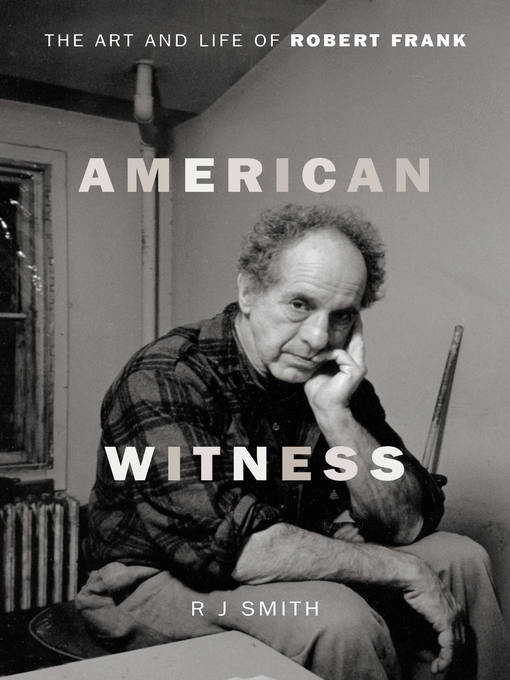
American Witness
The Art and Life of Robert Frank
- اطلاعات
- نقد و بررسی
- دیدگاه کاربران
نقد و بررسی

October 1, 2017
Dissecting the mysterious Robert Frank (b. 1924).In his erudite new biography, Smith (The One: The Life and Music of James Brown, 2012, etc.) explains that Frank is the type to quickly walk out the back door at an event to avoid interviews and send critics and fans running. Though this eccentric character may seem like a perfect New York City creation, he started his life in Zurich in the 1920s. It wasn't until 1947, after living through the atrocities of the war and the inescapable solitude his Jewish religion instilled, that Frank came to the United States. He arrived at the height of the postwar bloom in creative productions of all types. But for a man like Frank, New York was just a temporary appeaser to his overflowing curiosity. He went off to Europe and South America to explore the range of images he could produce with limited resources. "I'm always looking outside, trying to look inside," he once said. "Trying to tell something that's true. But maybe nothing is really true--except what's out there, and what's out there is always different." Through it all, though, New York remained Frank's muse. Encountering artists such as Allen Ginsberg, Jack Kerouac, and Jonas Mekas, Frank eventually took to the camera to explore the moving image. In parallel, he was also working on his opus, The Americans (1958), which, though viewed today as a foundational work in defining an American identity during the postwar era, was met with significant criticism. Smith compellingly tells the story of one of the most iconic and notoriously aloof artists of the 20th century in a way that is neither dry nor contrived; he helps us to know a seemingly unknowable artist.Sprinkled with subtle touches of poetic discourse and the author's deeply felt passion and admiration for Frank's work, this book is a page-turning emotional delight.
COPYRIGHT(2017) Kirkus Reviews, ALL RIGHTS RESERVED.

November 15, 2017
Master photographer and filmmaker. Iconoclast. An outsider who resolutely fled fame but earned it anyway. A man who barricades himself against those seeking to know him. That's Robert Frank, who in the mid-1950s took a road trip across the country, shooting some 27,000 photographs along the way. Eighty-three of them made their way into his iconic 1958 photo album, The Americans, which earned mixed reviews at first but grew steadily in stature. Today, this work is recognized as the classic it deserves to be, unusual at the time in its subject--an unhomogenized, unbeautified America--and approach--shots taken on the sly, no gloss. Frank didn't like the spotlight then, and at 92, doesn't like it now. Frank refused to meet with Smith (The One...James Brown) or allow reproduction of his prints or correspondence. Fortunately, Smith, a singularly talented writer, persevered. The result is an absorbing study of an enigmatic but engaging artist who still has much to say. VERDICT Cineastes and photographers, lovers of art or biography, and many others will devour this perceptive account of a great but elusive artist.--David Keymer, Cleveland
Copyright 2017 Library Journal, LLC Used with permission.

October 15, 2017
Robert Frank is notoriously private. When Smith tracked him down and told him he was writing a biography, the famed photographer, best known for his photo book, The Americans (1958), simply wished him luck. In lieu of new firsthand accounts, Smith cobbles together a detailed account of Frank's life via archival materials, previously published interviews, and analyses of Frank's photographs. From these fragments, Smith writes a comprehensive biography that follows the photographer from his childhood in Nazi-occupied Switzerland; to his early career cavorting with the Beats and the abstract expressionists in New York City; his mid-1950s cross-country adventure shooting The Americans, with his young family in tow; to his retreat to Cape Breton, Nova Scotia, with his second wife, the artist June Leaf, in the 1970s and the years of experimental filmmaking that followed. Sadly, the book includes none of Frank's pictures, but in their place, Smith offers meaty, evocative descriptions. These, along with excerpts of conversations with the photographer's friends and colleagues, allow Smith to deliver a multidimensional portrait of a man best known for depicting others.(Reprinted with permission of Booklist, copyright 2017, American Library Association.)




دیدگاه کاربران